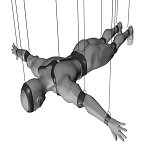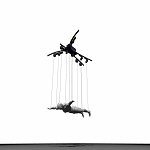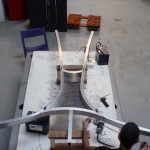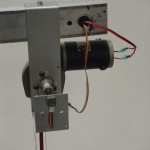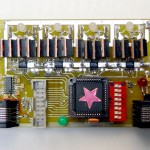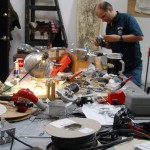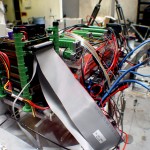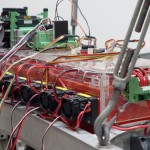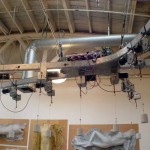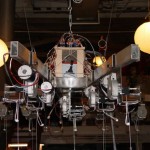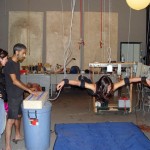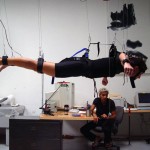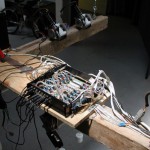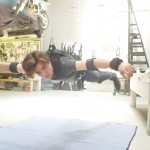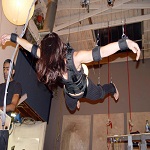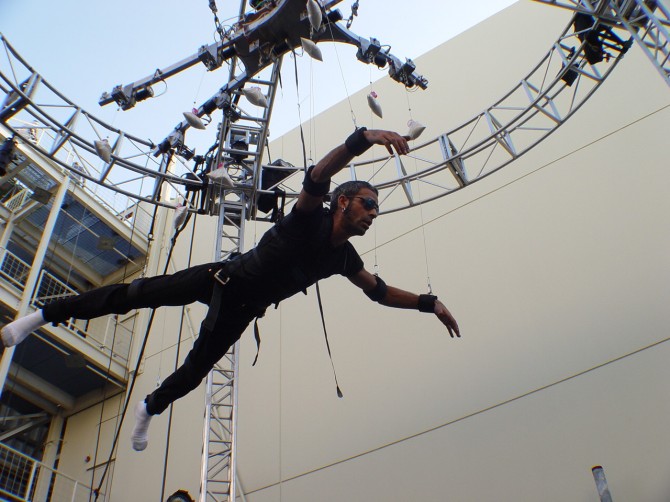
The Extreme Spatial Experience Apparatus (E-Sea) is essentially a feedback device that captures brain and internal physiological activity (EEG,EKG) and uses that information to control the movement of the users body.
The Extreme Spatial Experience Apparatus (E-Sea) incorporates 11 motors arranged in a cross formation. Using straps and cables, each motor is connected to a joint of the body suspending the figure face-down in a horizontal position above the ground. The body is also connected to a series of monitoring instruments that provide data such as pulse, breath, brain activity, and other such physiological information. This data is subsequently fed into a computer which controls the motion of the motors connected to the body.
In the E-Sea, the primary orientation of the body is horizontal and motion is parallel to gravity. The usual feedback system between the occupant’s senses and the environment is replaced by information about the person’s physiological state determining the person’s interaction within the space. Here the subject no longer has the choice of adjusting their relationship with the environment rather, movement is mandatory in a manner outside the subject’s external control.
This research project dates back to the late 1990’s prior to the advancement of technology such as arduinos et cetera. Therefore custom motor controllers and input/output boards had to be created. All components that make up the assembly are off-the-shelf items reconfigured for a new purpose.
In its full rendition, all components of the space, including the sounds, lights, and even the physical movement of the walls and other objects within the environment is also controlled by the users EEG and EKG data. So in turn one is able to be immersed in a physical environment that is controlled and representational of condition of the user.

